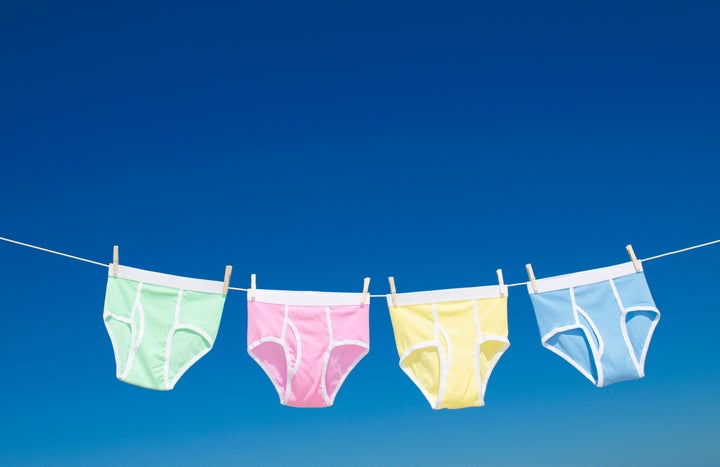
“We are bathed, as a society, in feces.”
So says Philip Tierno, professor of microbiology and pathology at New York University. His statement is something to keep in mind when it comes to old underwear. You know, those stretched out, holey pairs that have been in your dresser for a shamefully long time, saved for “emergencies” or laundry day.
But did you know that even after you wash your underwear, there may still be bacteria living on it?
Washing your undergarments doesn’t always totally sanitize them, so you might want to rethink how long you keep them.
As Philip Tierno, professor of microbiology and pathology at New York University, explained to HuffPost, our underwear sits atop the skin around the area that contains E. coli. No matter how much you try to wash it away from your skin, Tierno said, you can’t really get rid of it all, which means it could end up on your underwear.
(For additional context, it’s been said that there’s roughly a 10th of a gram of poop in an average pair of washed underwear, according to Dr. Charles Gerba, a professor of microbiology at the University of Arizona who spoke to ABC News in 2010.)
“But it’s normal, and it doesn’t hurt you,” Tierno added.
Thankfully, that means the bacteria on our underwear aren’t a major cause for concern, at least in terms of our health.
You do need to wash your underwear regularly, though, and you should do so after every wear.
Tierno did note, however, that the average person could probably get away with wearing the same pair of underwear two days in row without a problem, though he wouldn’t advise any longer than that. To be safe, just wear a fresh pair every day.
The best way to wash your undies is in the hot water cycle with bleach, which is the most effective product to kill the organisms living on your undies, Tierno said. However, some fabrics can’t withstand hot cycles, so cold or warm water with a detergent that contains peroxide is also an option.
Additionally, according to Tierno, hanging your undergarments to dry in the sun is great, too, as the UV rays can help sanitize them.
In terms of replacing your skivvies, the best practice, according to multiple outlets, is to replace the underwear you wear regularly every year.
Theoretically, though, Tierno said, you can pretty much keep your underwear until it falls apart, given that you’re washing it well and regularly.
“As long as they function properly and you wash them and the elastic is fine, and they fit fine, there’s no holes or fabric erosion, you can use them,” he said. “There’s no end period, except when it’s mechanically dysfunctional.”
The longevity of every pair of knickers will also depend on the quality of its material and your laundry habits. However, there are some telltale signs that indicate when it’s time to drop your underwear.
“The key to knowing when it’s time to toss your undergarments is looking at [their] remaining properties ― stretch, fit, aesthetic,” Jockey’s creative director, Laetitia Lecigne, told HuffPost. “If there is any sagging, drooping or deformities in the shape, it’s time to go!”
Because, let’s be real, there’s nothing comfortable or attractive about saggy underwear bunching up in your pants.
“Even if you don’t wear a pair for a long time and they stay in your drawer, spandex and elastics ‘die’ and give out,” she said. “You can tell that this has happened if they don’t bounce or stretch and recover anymore.”
Lecigne also noted that factors such as whether you’re wearing your underwear at the gym or at work and how you wash it and how often you wash it will affect its life span.
At the end of the day, just wash your underwear regularly, get rid of it when it’s visibly worn out and keep your nether regions happy.